September
Second Midland signal in the garden.
As a result of the resourcefulness, ingenuity and sheer hard work of the members involved, we now have a second working Midland Railway signal in the garden. The steel corrugated arm and the livery together would have applied from 1914 onwards, and represent a different era to the first signal, which is pre-1906. It is operated from the LNWR ground frame lever, and is weighted so that it will test the strength of our visitors who are willing to have a go!
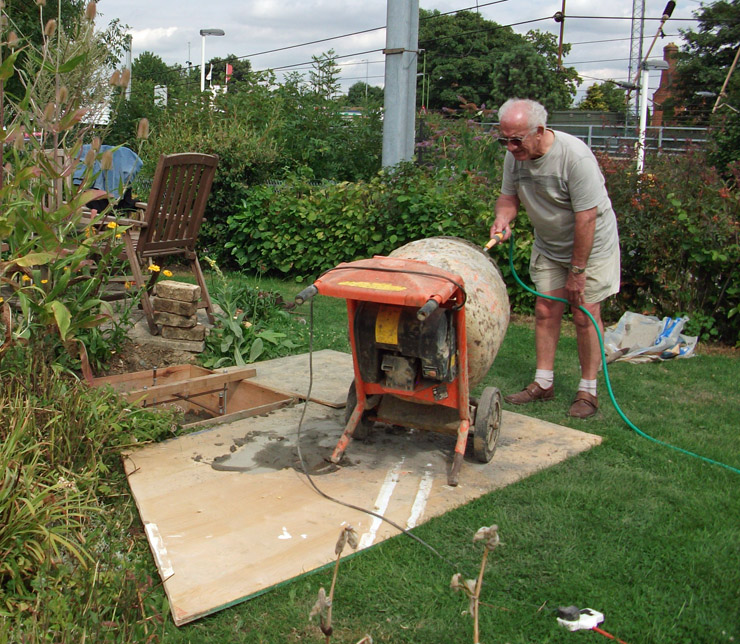 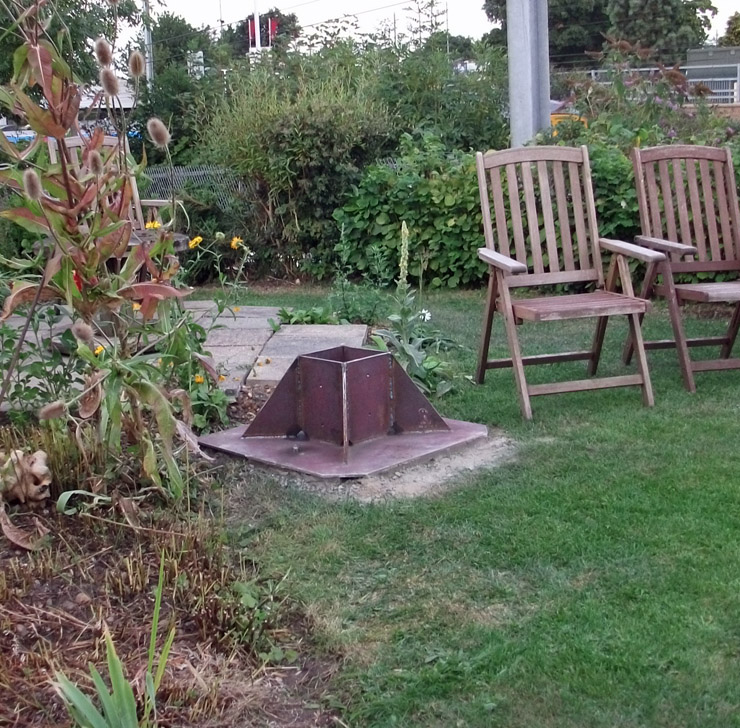 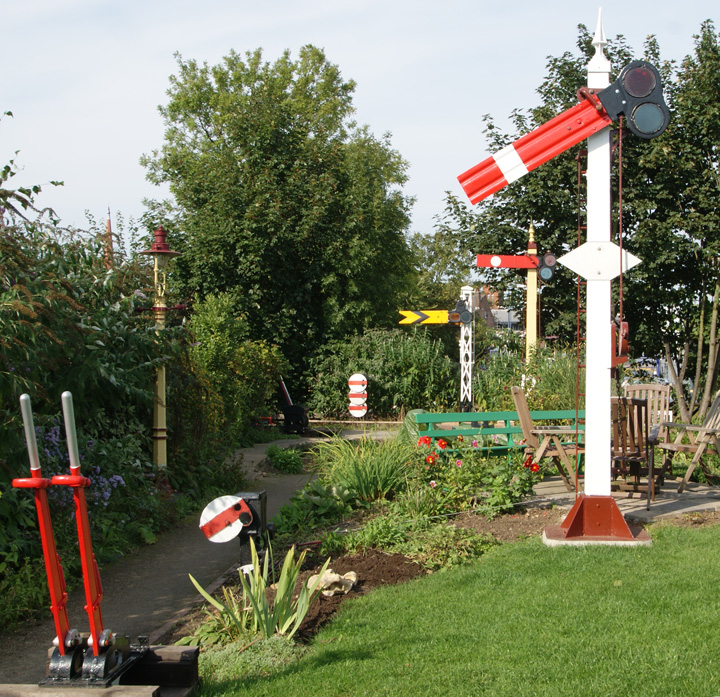 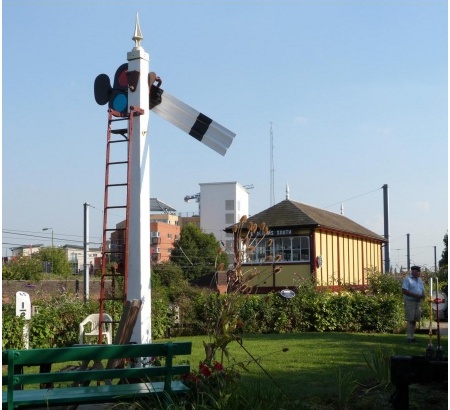
(a) (b) (c) (d)
(a) The concrete base for the new signal is being prepared by filling a large hole with concrete; four large threaded studs are held in place by timbers to be included in the concrete for the next stage.
(b) A fabricated steel foot is firmly held by the cast-in studs to take the bottom of the post. This is the way we supported our first signal and overcomes the problems of such posts becoming rotten when inserted into the soil directly; this prolongs their life significantly.
(c) The new signal seen from the front;
(d) and from the rear. At the time of erection we did not have the lampman's platform to hand to add to the ladder.
We are very grateful to the Roy Burrows Collection for the long-term loan of most of the signal parts, to Derby Museum for one of the cranks, and to the NRM for the post and finial.
We continue to find new styles of mile-posts - this version is a British Railways Fibre-glass one:
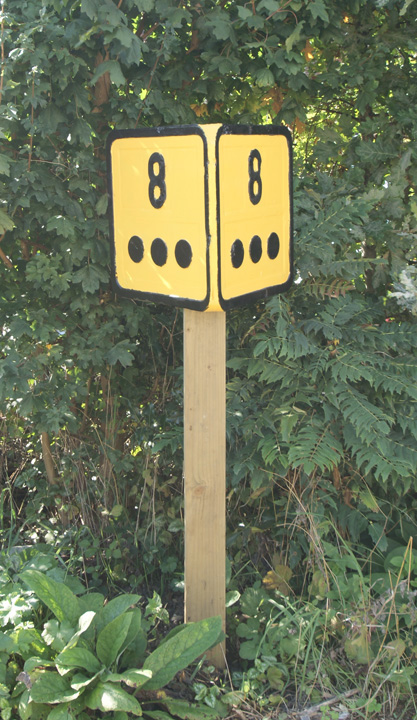
|